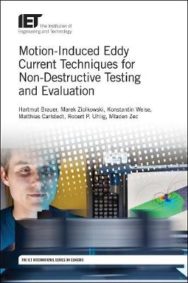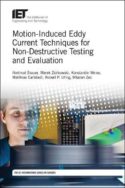
ABOUT THIS BOOK
PUBLISHER: Institution of Engineering and Technology
FORMAT: Electronic book text
ISBN: 9781785612169
RRP: £150.00
PAGES: 360
PUBLICATION DATE:
September 1, 2018
BUY THIS BOOK
As an Amazon Associate and Bookshop.org affiliate we earn from qualifying purchases.
Motion-Induced Eddy Current Techniques for Non-Destructive Testing and Evaluation
Hartmut Brauer
Marek Ziolkowski
Robert P. Uhlig
Mladen Zec
Konstantin Weise
Non-destructive testing (NDT) analysis techniques are used in science, technology and medicine to evaluate the properties of a material, component or system, without causing damage or altering the article being inspected. It is a highly valuable technique that can save both money and time in product evaluation, troubleshooting, and research. Well known and widely used in industrial applications since the 60s, the NDT market is developing and growing very fast.This book focuses on electromagnetic NDT methods and more specifically on the motion-induced eddy current testing and evaluation (MIECTE) techniques used for conductive materials via electromagnetic methods, focusing on the Lorentz force eddy current testing (LET) method which has been introduced recently. The authors present the modelling and simulation of LET systems as well as the optimal design of the measurement setups. They also show the wide variety of possible applications of the LET method including defect identification and sigmometry to estimate electrical conductivity of the tested material.Ideal material to use when training sensing and material engineers, professionals, developers and scientists on Non Destructive Testing (NDT), evaluation (NDE) and applications. This book is also for manufacturers of conductive (non-magnetic) materials and devices which have to proof defect-free products and inspection departments in companies manufacturing metallic rolling products such as sheet steel, rods and tubular goods. Students, researchers and lecturers at universities and research institutes with NDT courses in electrical engineering, sensing, robotics, mechatronics, mechanical engineering, fluid dynamics, material science and composite materials will also find this book useful.











